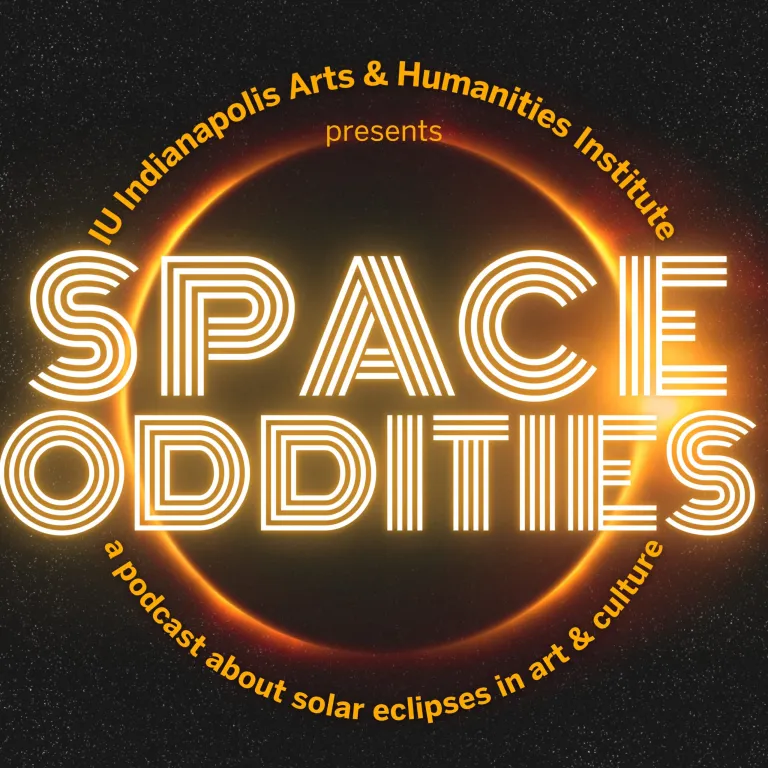In celebration of the coming eclipse, the IU Indianapolis Arts and Humanities Institute is excited to premier this new forty-minute podcast episode. Titled “Space Oddities” in honor of David Bowie, whose music inspired humans to look to the skies, this podcast will treat listeners to the story of solar eclipses across human history, from ancient Greek technology to the first film recording of a solar eclipse in the early twentieth century. With a focus on material culture, this podcast explores our enduring fascination with eclipses through the stories of four objects that span an array of geographical regions and historical time periods. It was written and produced in collaboration between IAHI postdoctoral fellow Nathan Schmidt and students from the First-Year Research Immersion Program (1RIP). We are so proud of the excellent work the 1RIP students have put into the episode that you are about to hear.
Have people really always seen solar eclipses as a sign of coming disaster? Why was the first film of a solar eclipse taken by a stage magician? Also, what does Indiana Jones have to do with all this? If you want to be in the know about all things eclipse-related before the big day on April 8th, you’ll want to listen to “Space Oddities.”
You can find the full episode here, and on major podcasting platforms. Thank you for listening.
The IAHI would like to thank Dr. Catherine Pilachowski, Dr. Edward Rhoads, and Dr. Deborah Deliyannis for their participation in this project. The music in the podcast is by Holizna, who has graciously made his work available through the Free Music Archive.
Here, you can read Dr. Tony Freeth’s research on the Antikythera Mechanism, see images of the fragments, and explore models of what the machine may have looked like when fully assembled. Current images of the Beijing Ancient Observatory can be seen here, provided by NASA. The Science Museum Group has images of Henri Robert’s eclipse model here, and the Royal Astronomical Society’s restored digitization of the first eclipse caught on film can be seen here. This link will take you to the full bibliography for the project.


